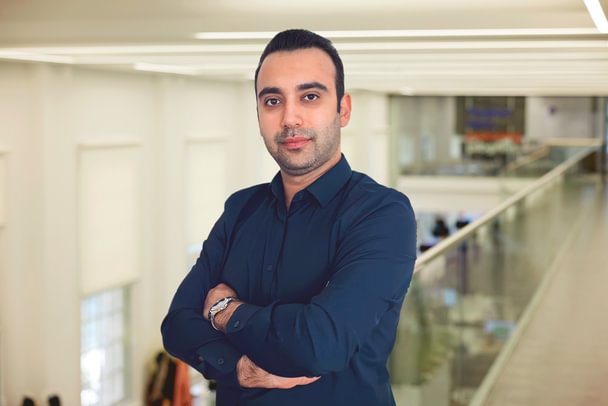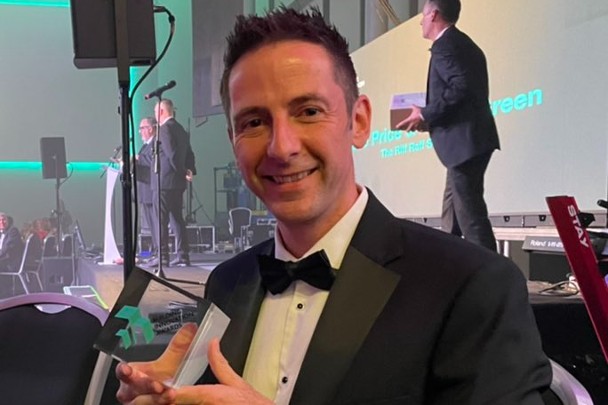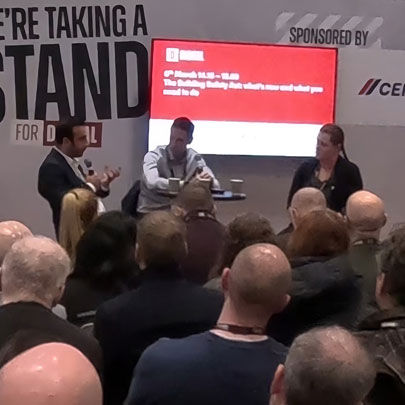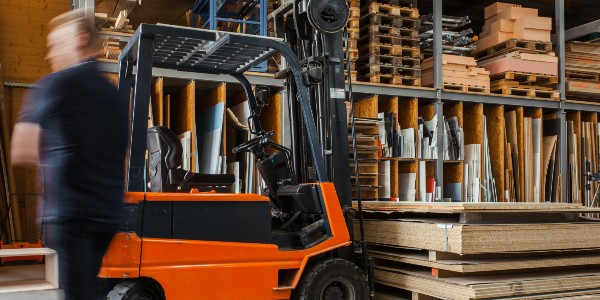April 09, 2024 Industry news
We recently attended, FutureBuild 2024, a renowned trade exhibition and conference dedicated to the entire built environment. Showcasing the most innovative technologies, products, and services, it is considered the UK's leading event for the construction industry and brings together industry professionals, decision-makers, and specialists across the entire supply chain to explore of the latest trends and best practices in modern construction.
This year, GS1 UK head of construction Shervin Yousefzadeh appeared alongside Jason Whittal, director & owner of ONE Engage & ONE Creative Environments, a multidisciplinary design organisation, pushing the boundaries of integrated design team collaboration, in a panel discussion on The Building Safety Act.
We have summarised some of the key themes and insights below…
2022 saw the Building Safety Act become law. Last year regulations opened for high rise buildings and we had to start preparing safety cases. Are there any upcoming events we need to be aware of?
Jason: “In April 2024, all principle accountable persons that are in control of high-risk buildings need to be ready for the building safety regulator calling those in for review. They can’t call them all in at once as the regulator doesn’t have the resources to do that, but you will start to see safety cases and building safety reports being called in."
What are the requirements? How complex is it?
Jason: “A building safety case is a network of systems. It is not a single document. It is a collection of processes that must be in place to manage high-risk buildings. The principle accountable person is responsible for creating the building safety case, which is essentially an evidence report on how they operate safely across whatever it is they are managing. The accountable person must be able to extract key information and submit that as evidence that they are complying with the Act, its secondary legislation and everything else within it."

Shervin Yousefzadeh, head of construction at GS1 UK
How does this relate to the golden thread and what is the golden thread to you?
Shervin: "It is not a tangible thing that is easy to describe. In some ways, it is better to begin with what the golden thread is not. It is not a platform, it is not a software, it is a process for collecting information which is accessible, interoperable and can be uses anywhere, at any time.
"This involves gathering information from the point of manufacture (product data), during design, construction and throughout the lifecycle of the building itself. This information must be maintained and kept up to date at all times."
Is industry set up to create and manage the golden thread?
Shervin: "I believe that 80 per cent of golden thread information is already being created but this data is siloed and the industry fragmented. Many designers and contractors are already storing data but it is not interoperable so it cannot be shared or accessed effectively. We don’t need to recreate the wheel and start from scratch, it is more about how we start structuring existing and new data to ensure it is interoperable, traceable and accessible to all who need it."
Jason: "One of the biggest challenges I see is the cultural shift required to implement these changes. For so long now, operators have been acting in a way that has led to disasters such as Grenfell and if this were acceptable, we would not have the new regime in place. The guidance, standards, and documents are reaching maturity and are available for people to review, but it is still very complication to understand that network of documents. The biggest challenge isn’t just reading and understanding it. It is unpicking years of archaic processes. For example, ringing up the caretaker to get a safety issue sorted won’t cut it anymore. The Act calls for traceable, documented evidence that you need to provide as part of your safety reports. You need evidence that you are complying.
"This is all about residents. People must feel safe in their homes and that is a difficult metric to measure. It is complicated and the scale of it is only just starting to impact those that are taking building safety cases seriously as they are starting to assemble them. Some are trying to subcontract this work out to others such as consultants. OK, consultants are there to help but ultimately it is the principle accountable person that must take responsibility for their risks. We have a long way to go before full compliance becomes a reality."
The government say this must be digital but what does that mean? Is there a role for BIM in this?
Shervin: "We cannot really sperate BIM or digital twins from the golden thread. We are already gathering information for those models so it is now a matter of how we can transfer the data we capture in these models into a golden thread. When we talk about the “single source of truth” that the golden thread digitally captures, it is important to remember that there is a big difference between the digitisation of documents and digital documents. We need structured information on a structured document, something that it is machine readable. If we create documents that are set up in such a way that all information that can be used across different systems and software, then we can all it interoperable.
"The missing piece of the puzzle here is how we can improve the interoperability of digital twins because currently, we are creating lots of fantastic models but are we really using that information during operations? How many examples do we have of digital twins being used properly during the operational phase. One of the key barriers at present is the lack of interoperability between different solutions. We need to start thinking about how we can think about interoperable data so stakeholders don’t need to worry about the software or hardware they are using as the data will always be there and accessible across the whole industry."

Jason Whittal, director & owner of ONE Engage & ONE Creative Environments
How do we get there?
Jason: "We need new systems and processes to comply. Once you start to collect data on safety issues – what happened, how long it took to resolve, what methodology was put in place etc. – you can start feed that information back.
"So that feedback loop is all digitised, data is captured, accessible and can then inform strategies going forward.
"It is not just about how you communicate and send documents out; it is about getting data back and using that data to inform your strategy for reducing risk."
Shervin: "The journey must start at the manufacturer level. We need to have a standardised format for product information, we need to be able to collect and capture that information from manufacturers, through to the merchants and during the construction phase of a project. At present, there is no standardised way of doing this. We need to move towards more open standards that will allow more parties to get involved and collaborate, creating greater value for all."
Jason: "The scale of the challenge is huge. If you took a typical housing association that had around seventy high-risk buildings, within that you would typically have around 2,800 to 3000 residential units with around 4,800 to 5000 residents. That is a fairly typical scale for a housing association and those 70 blocks might not be in the same town or city. They may be across several different fire service regions. This means the new building safety regime would generate around 850 information exchanges in the first year with the fire service alone.
"When you look at the exchanges of information that are required with the residents alone (i.e. resident engagement strategies, fire evacuation strategies, all the certifications that must be shared with residents, you are looking at almost 7000 to 8000 exchanges in the first year. How are you going to evidence that? Sending emails or putting information in notice boards does have its place but this is not enough. We need more tools to be able to comply, help operators share information and ensure residents can receive it in a way they understand."
Can you demonstrate that scale?
Jason: "Under the new regime, we start with the building safety act. Under that we have secondary legislation, and under that we have statutory instruments, guidance documents, fact sheets and main pieces of legislation such as the regulatory reform order. It is all connected so when someone says, “can you comply with the building safety Act,” we need to remember that it is just one single document. You have to try to understand all the elements within it and different stakeholders will be focused on different elements, but building managers need to understand it all."
What is your recommendation. Where should stakeholders start?
Jason: "Start with an overview of the Act and why it has come in before focusing on what is relevant to your role or organisation. To do that you need to read it all so you can identify the elements you will be responsible for and how that fits into the bigger picture."
Shervin: "Start with the basics. First understand your roles and responsibilities, what you need to provide, and reverse engineer what you need to have in place to get to that point. There is no single solution or software to solve all your problems. No one can fix this alone; it is a collaborative effort. We need everyone involved. We need everyone to do their jobs, so the responsibility matrix is very important. We need make sure we know who has to provide what information at what stage. When you start with the basics, you will gradually get to the point where you are ready to comply and provide the relevant information to support the golden thread."

A crucial point will be ensuring that information is accessible for the rest of a building’s life. What happens to the golden thread when an operator sells up? How do we make sure information is accessible in the future?
Jason: "We can longer do what we currently do, which is sell a building as seen. The new owners then have to survey the building to see what issues they have inherited. Data needs to stay with the building. It is a part of the asset and has real value. Until clients start putting a value on that data, they will be forever throwing it away and paying multiple times to collect it again. Data is an asset in itself and needs to be viewed as such."
Shervin: "The only way we can effectively trace an asset or product is through unique identification. We need to learn from other industries instead of reinventing the wheel. We need to look at existing practiced and apply them to construction. That is why at GS1 UK, we are trying to implement systems for unique identification that have been in place across retail and healthcare for decades."
How do we make this a reality?
Shervin: "By working together. This needs to be a collaborative process. The whole industry and government needs to get aligned on this. A focus needs to be put on information; better, more accurate data means safer buildings, a safer future."
Jason: "We need to educate those coming into the industry and raise the bar of understanding. If you are placing data onto platforms, you need to think about who actually needs it and whether they can switch it on."



